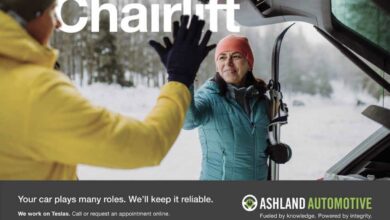A Doggone Good Way to Protect Your Pup
Nearly all of us have pulled to a stop light, turned to our right and seen a dog riding comfortably on a driver’s lap. And rarely does a day go by that we don’t see at least one dog living the life with its head out the window enjoying the breeze.
While in most cases very cute, a free-wheelin’ pup in the cabin of your car can be the precursor to catastrophe. There are some sobering statistics when it comes to unrestrained dogs roaming the cabin while drivers are cruising the town:
• According to a study by Volvo, drivers are distracted more than twice as often—and make more than twice as many dangerous driving moves—when there is a pet unrestrained in the cabin.
• AAA reports that more than half of drivers take their hands off the wheel to pet their animal while the car is in motion if the animal is in the car. Another one in five have removed their hands from the wheel to prevent their pet from climbing to the front seat.
Among the riskiest behavior is allowing a dog to ride on the driver’s lap—which happens frequently as our canine friends naturally want to be where we are. In addition to sitting on the driver’s lap, an unrestrained dog often paws or nudges at the driver, blocks the view out the side or rear windows, stands on the center console, inadvertently steps on the gear shift, jumps from front to back, and can even get down into the footwell and obstruct access to the gas pedal and/or brakes.
So, do we need to leave our doggies at home? No way!
Both Volvo and AAA report that a significant number of drivers would use a pet restraint system if they were more aware of how unrestrained pets can injure themselves or others. So here is your warning:
In the event of an accident, your unrestrained pup can become a projectile, likely injuring themselves and others in the car. If the dog is sitting up front, they risk serious injury or death caused by deployed airbags. More specifically, AAA reports that an unrestrained 10-pound dog traveling at 50 miles per hour flies forward with 500 pounds of pressure in a crash, and an 80-pound dog at only 30 mph packs a 2,400-pound punch.
Yikes.
The best thing you can do for you AND YOUR DOG is to invest in a restraint system.
There are several devices for dogs of all shapes and sizes available from online retailers. The key is that you select a restraint that is the proper size for your dog and that buckles directly into the seat belt buckle in the back seat.
Safe travels to you and your pup! Read more of Zach’s blogs at www.ashlandautomotiveinc.com/blog/




